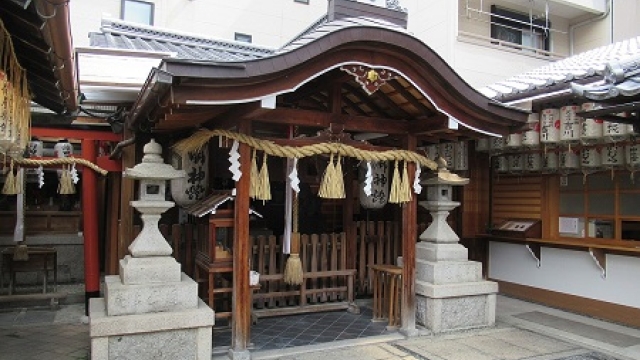
Whispers of the Ancients: Exploring the Enigmatic Shinto Shrines of Japan

In the heart of Japan, where ancient traditions seamlessly weave into the fabric of modern life, the Shinto shrines stand as monuments to the country’s rich spiritual heritage. These sacred sites, often nestled in serene natural landscapes, serve as places of worship, reflection, and connection to the divine. Each shrine, with its distinctive architecture and rituals, whispers stories of a past steeped in mythology and culture, captivating both locals and visitors alike.
Exploring the Shinto shrines in Japan unlocks a world where time seems to stand still. From the vibrant red torii gates marking the entrance to the peaceful tranquility found within their grounds, these shrines offer an intimate glimpse into the beliefs and practices that have endured for centuries. As we journey through this enchanting realm, we will delve into the significance of these sacred spaces, their architectural wonders, and the rituals that bring them to life, revealing the enduring spirit of Shinto that continues to resonate in contemporary Japan.
History of Shinto Shrines
Shinto shrines, known as jinja, have a rich history that dates back to ancient Japan, intertwining with the nation’s cultural development. The origins of Shinto beliefs can be traced to the indigenous animistic practices of the Japanese people. As communities formed and society evolved, the worship of kami, or spirits, came to be centralized around sacred sites that were believed to house these deities. This practice led to the establishment of the first shrines, which were often simple structures made from natural materials like wood and thatch.
During the early periods of Japanese history, especially from the Yayoi to the Kofun periods, the construction of shrines became more organized. The introduction of Buddhism in the sixth century further influenced Shinto practices, resulting in the syncretism commonly seen today. As a result, both Shinto and Buddhist elements began to coexist, giving rise to unique architectural styles and rituals within these sacred spaces. By the Heian period, Shinto shrines became an essential part of Japanese culture, often featuring impressive designs and elaborate festivals to honor the kami.
With the rise of the samurai and the establishment of the feudal system, the role of Shinto shrines evolved. They became important settings for ceremonies marking significant events such as births, marriages, and deaths, fostering a deep connection between religious and national identity. The Meiji Restoration in the late nineteenth century further transformed Shinto shrines into symbols of state ideology, promoting Shinto as a unifying cultural force for the Japanese people. Today, these shrines serve not only as places of worship but also as vital links to Japan’s historical and spiritual heritage.
Architectural Features
The architectural design of Shinto shrines in Japan is deeply rooted in the country’s natural environment and cultural heritage. These sacred spaces often feature wooden structures that harmonize with the surroundings, reflecting a profound respect for nature. The simplicity of design emphasizes the beauty of the materials used, predominantly wood, which is often left unpainted to allow it to weather naturally over time. This approach instills a sense of serenity and connection with the elements, creating a peaceful atmosphere for worshippers and visitors alike.
One distinctive feature of Shinto shrines in Japan is the torii gate, which marks the entrance to the sacred space. Typically made of wood or stone, the torii serves as a symbolic threshold separating the profane from the sacred. This structure can vary significantly in style and color, with the vibrant vermilion gates being particularly iconic. The torii not only provides a visual cue of the shrine’s significance but also invites visitors to mentally prepare for their journey into a spiritually charged environment.
Another notable characteristic is the honden, or main hall, where the kami, or spirits, are enshrined. This building is often elevated on stilts, with thatched or tiled roofs that curve elegantly upward, reflecting traditional Japanese architectural aesthetics. The honden is usually simple and devoid of elaborate ornamentation, focusing instead on a sense of tranquility and respect. Surrounding the honden, one can find other structures such as the haiden, or worship hall, and various auxiliary buildings that contribute to the shrine’s overall harmonious layout, further enhancing the mystical experience for all who visit.
Significance in Japanese Culture
Shinto shrines in Japan hold profound significance within the cultural and spiritual landscape of the nation. They serve as vital centers for community worship and connection to the divine, reflecting the deep-rooted relationship between nature and spirituality in Japanese belief. Each shrine is dedicated to a specific kami, or spirit, that embodies elements of nature, ancestral figures, or various aspects of life, thus linking the physical world with the spiritual realm. This connection is not only a matter of faith but also a source of inspiration for art, literature, and tradition in Japanese society.
The rituals and festivals associated with Shinto shrines are crucial for maintaining cultural heritage and fostering community bonds. Events such as Matsuri, which honor kami and celebrate seasonal changes, highlight the significance of agriculture and the changing rhythms of nature. These festivities encourage participation from local communities, providing opportunities for collective identity and shared experiences. Through these communal gatherings, the values of gratitude, respect for nature, and the importance of family are emphasized and passed down through generations.
In a rapidly modernizing world, Shinto shrines in Japan offer a sense of continuity and grounding. They serve as peaceful retreats where individuals can reflect, seek guidance, and reconnect with their roots. The presence of these sacred spaces fosters an appreciation for Japanese traditions and the harmonious coexistence of the past and present. Thus, Shinto shrines remain not just places of worship but integral components of Japanese culture that nurture both individual and collective identities.
Visiting Iconic Shrines
One of the most renowned Shinto shrines in Japan is the Meiji Shrine, located in Tokyo. Nestled within a tranquil forested area, this shrine is dedicated to Emperor Meiji and Empress Shoken. Visitors can experience a serene atmosphere as they stroll along the long path flanked by towering trees. The stunning architecture of the main hall, built in the traditional style, is a highlight, and many come to participate in age-old rituals, hoping to gain blessings for their families and future endeavors.
神社めぐり
Another must-visit is the Fushimi Inari Taisha in Kyoto, famous for its thousands of vibrant red torii gates that wind through the sacred Mount Inari. Each gate was donated by individuals or businesses, creating a pathway that symbolizes the journey toward enlightenment. The shrine is particularly stunning during early morning or late afternoon when the sun filters through the gates, casting enchanting shadows. Hiking through this hallowed space provides a deep connection to the sacred nature of Shinto beliefs.
Lastly, the Ise Grand Shrine stands as one of the most significant Shinto shrines in Japan, dedicated to the sun goddess Amaterasu. Located in Mie Prefecture, this shrine draws pilgrims from all over the country and symbolizes purity and renewal. What makes Ise truly special is its unique construction—every 20 years, a new shrine is built next to the old one, ensuring traditions are preserved while also embracing the cycle of life and death. Visitors can immerse themselves in the profound spirituality that resonates throughout this sacred site.



